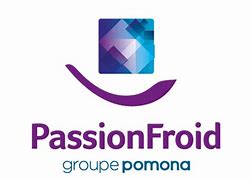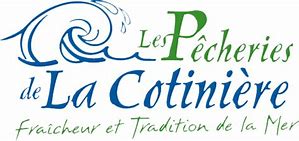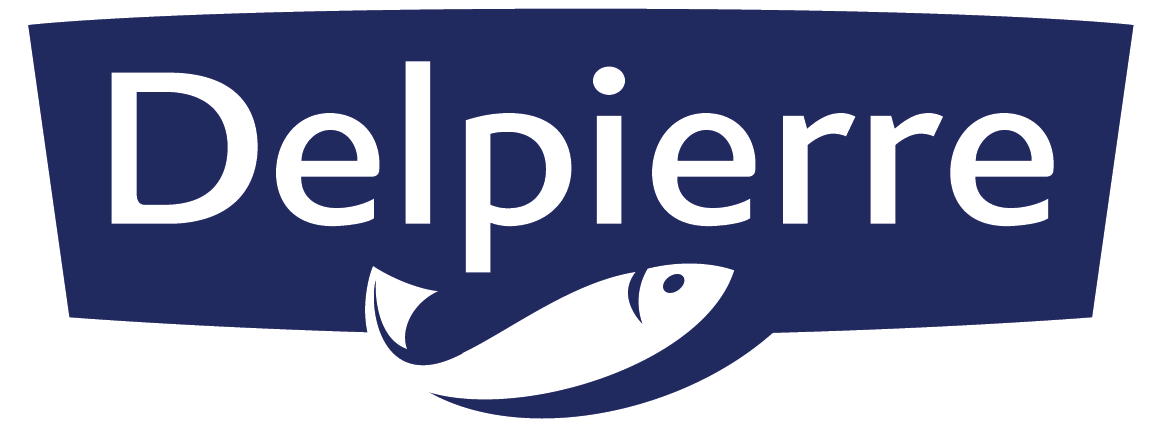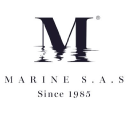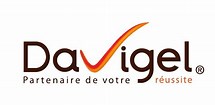Synthèse
The global seafood market is expected to grow at a CAGR of around 2.9% between 2020 and 2030, reaching a market value of $207.2 billion. However, overexploitation of marine species poses challenges, with the percentage of global fish stocks caught at unsustainable levels rising from 10% to 34%, signalling environmental constraints on market growth.
France, in particular, has seen a slight decline in fish consumption, from an average of 36 kg per capita to 32.6 kg in 2020. Despite a well-developed distribution infrastructure, with the majority of fresh seafood sales taking place in supermarkets and hypermarkets, the French market remains highly dependent on imports, resulting in a trade deficit of 4.8 billion euros in 2021.
The main imported species are salmon, shrimp, cod and tuna, mainly from the UK and Norway. The country's seafood exports are mainly destined for European neighbors such as Italy, Spain and Belgium. At the end of the year, demand for seafood products generally rises sharply, as Google Trends data shows...
Fluctuating demand on the French seafood market
The French seafood market presents a complex and nuanced picture of consumer behavior and market trends. While seafood products are an essential element of French cuisine, consumption patterns show slight variability, with an increase in market value and a gradual decline in consumption rates. According to the text, the seafood industry is enjoying a note of optimism, with market volume forecast to grow, albeit modestly, from around 3.14 million tonnes in recent years to 3.18 million tonnes by 2023. This corresponds to a marginal growth rate of around 0.2% per annum over a seven-year period.
At the same time, the value of the seafood market has risen more sharply, from €5 billion to over €6 billion, corresponding to an annual growth rate of close to 2% over a similar period. Despite the high penetration rate of seafood as a food choice, with almost all French people having consumed seafood, only 36% reach the recommended weekly intake. French consumer profiles also reveal varying preferences according to seafood purchase category. Fresh seafood remains the choice of older people, while younger consumers prefer frozen and canned products.
Import trends greatly influence the French seafood market. The main imports are of popular species such as salmon, shrimp, cod and tuna, which are not commonly found in French waters, or whose supply is limited. Most of these imports cater to the varied and rich tastes of the French palate, with demand peaking particularly during the festive season, as evidenced by end-of-year search trends.
While market segments such as organic and boneless fish are experiencing renewed interest, the overall market scenario in France reflects a mature and rather stable state, with some categories experiencing declines that are offset by growth in others. French consumers' loyalty to seafood products remains strong, but the structure of the market indicates a delicate balance between the forces of import dependency, changing consumer behaviour and the drive towards sustainable and ethical consumption
The French seafood market, despite slight fluctuations in consumer habits, is a diversified and dynamic sector that boasts several leading entities in the fields of distribution, production and importation.
Leading names in this field include PassionFroid, Grand Frais, Delpierre, Delmas Poisson, Davigel, Marine SAS, Alphaprim and Vivafysh, each bringing its own unique strengths and offerings to the table.
- Wholesale distributors: PassionFroid and Grand Frais
PassionFroid and Grand Frais are titans of seafood wholesale distribution in France. PassionFroid is renowned for its comprehensive range of products for a variety of sectors, including restaurants, institutional catering and chain stores. Grand Frais is renowned for its market-style store concept offering a wide selection of fresh food products, including a rich array of seafood products.
- Seafood producers: Delpierre and Delmas Poisson
On the production side, Delpierre and Delmas Poisson make a significant contribution to the market with their quality seafood products. Delpierre is renowned for its processed and ready-to-eat seafood products that meet the needs of convenience-seeking consumers, while Delmas Poisson is a testament to quality and tradition, with a focus on high-end seafood products.
- Seafood importers: Davigel and Marine SAS
Given France's dependence on seafood imports, companies like Davigel (part of Sysco France) and Marine SAS play an essential role in maintaining supply. Davigel is a powerhouse in the import industry, offering a vast selection of frozen and chilled seafood products to foodservice professionals. Marine SAS also imports and distributes seafood products to meet the demands of a market heavily dependent on international catches.
- Market innovators: Alphaprim and Vivafysh
Alphaprim, owned by the Quattrucci family, stands out not only for its commercial presence, but also for its innovative partnerships with food retailers such as Système U and Casino, combining the worlds of wholesale and retail distribution. Vivafysh is another remarkable player which, although smaller in size than the giants, brings innovation and adaptability to the market, responding to changing consumer preferences.
The interaction between these market players illustrates the complex web of the French seafood industry, highlighting the interplay between domestic production, global importation and international trade.
à la compréhension de ce marché
Détail du contenu
 Informations
Informations
- Nombre de pages : 30 pages
- Format : Version digitale et PDF
- Dernière mise à jour : 10/05/2023
 Sommaire et extraits
Sommaire et extraits
1 Market overview
1.1 Presentation and definition of the fish and seafood market
The seafood market covers the fishing, farming and distribution of seafood products. This market is dominated by a handful of leading wholesalers, who supply the distribution sector, from retail chains to restaurants and fishmongers.
The global seafood market is expected to grow at a rapid pace of 2.9% per year until 2030, driven in particular by demand from emerging countries. In France, however, the trend is not the same, since the market is relatively stable, due to a slight drop in consumption, offset by an increase in market value.
The trend in the French aquatic products market is to promote French fishing and farming (whereas the vast majority of fish consumed is imported). In addition, there is a desire tointegrate consumers' growing environmental awareness by offering greater transparency on product origin.
The main players on the French market are wholesalers such as PassionFroid and Grand Frais, producers such as Delpierre and Delmas Poisson, and importers such as Davigel and Marine SAS.
1.2 A steadily-growing global market, despite the brakes on expansion
According to Allied Market Research, the seafood market is expected to grow at a CAGR of around *.*% over the period ****-****, reaching $***.* billion.
Globally, the market is benefiting from a number of factors driving demand growth. Among the factors driving demand growth are
The constant increase in the world's population[***]; Increasing ...
1.3 Focus on the European Union
Source: ****
The table above shows which fish are most widely consumed in the EU; we can see that tuna accounts for the largest share (***) of consumption, and that European citizens consume an average of *.** kg of tuna per year.
Furthermore, the highest sufficiency rate (***), the EU relies on imports from other ...
1.4 Slight growth in the French market
The fish market is growing slightly in France, with an increase forecast every year between **** and ****. In ****, around *.** million tonnes of fish were consumed, and the figure is expected to rise to *.** million tonnes in ****. This represents growth of *.*% per year between **** and ****.
Seafood market volume France, ****-****, in millions of ...
1.5 France, a net importer of seafood products
While fish consumption is down slightly, with an average of **.* kg per person per year in ****, compared with ** kg in ****, the market remains heavily dependent on foreign flows. Seafood consumption in France is directly linked to the level of imports.
foreign trade in aquatic products France, ****-****, in billions of euros ...
2 Demand analysis
2.1 Slight decline in fish consumption
In France, average per capita consumption has fallen slightly in recent years, from ** kilos in **** to **.* kilos in ****. given the growing importance attached to healthy, sustainable food by the French, one might expect consumers to gradually turn to seafood as their preferred choice of protein. However, statistics show that consumers behave ...
2.2 Consumer profile
Penetration rate of different seafood purchase categories France, ****-****, in Source: ****
The trend that emerges from the graph above is a more or less significant decline in all seafood purchasing categories. The hardest-hit category is frozen seafood, with a drop of seven points. In the other segments, the drop is less ...
2.3 An explosion in demand for seafood at the end of the year
Google Trends QSR : Search for the word "Fruits de mer" (***) France, Jan **** - Jan ****, index base *** Source: ****
The graph above represents the proportion of searches for a given term in a given region over a given period of time, relative to the time when it was most searched for (***). Thus, a ...
2.4 Focus on octopus consumption
Consumption of octopus in France has increased significantly in recent years. Once considered an exotic delicacy or reserved for Mediterranean cuisine, octopus is gaining in popularity and is becoming increasingly present in restaurants and fishmongers' stalls. Consumption of octopus is often associated with coastal regions, where fishing is more abundant. However, ...
3 Market structure
3.1 Market value chain
In general, the time between landing the catch and delivery of the product to the fishmonger does not exceed ** h. This is enough time to sell the fish at the fish market, pack it, prepare it (***), transport it and market it.
at every stage, fishermen, fish markets, wholesalers, transporters, distributors and ...
3.2 Geographical distribution of the fishing industry in France
According to France Agrimer's latest report on general figures for the fishing industry in France, the fishing sector employed ***** people operating on **** vessels in ****.
All these fishing vessels are unevenly distributed across the country, obviously on the coasts and more particularly on the Atlantic coast.
Distribution of companies and sales by ...
3.3 Seafood distribution
The different distribution networks
Breakdown of fresh seafood sales by distribution channel France, ****-****, in Source: ****
The vast majority of fresh seafood is sold through supermarkets and hypermarkets. This segment is the only one to grow, while markets and fishmongers are losing ground. The rise of supermarkets can be explained by ...
3.4 A market dynamic in favour of responsible fishing
Fishing responsibly
Responsible fishing is a constant preoccupation for the industry. They rely on technical progress to keep by-catches and discards to a minimum, guarantee compliance with minimum catch sizes, preserve the seabed and control fuel consumption. For example, fishing gear is fitted with acoustic repellents to ward off cetaceans the ...
3.5 Focus on the foodservice industry
Market share breakdown of seafood distribution channels France, ****, in Source: ****
Foodservice is the most important distribution channel in France, generating **% of fish and seafood sales in ****. Seafood products bought, prepared and consumed at home are only third in the ranking, with *% of the market in ****.
This justifies the sums restaurants spend ...
4 Offer analysis
4.1 Products and their average price
The prices of the following products are the wholesale prices (***) on **/**/**** at Rungis Market, the reference hall for French agri-food sales.
Source: ****
Source: ****
Source: ****
Generally speaking, there are no rules when it comes to fish prices. As fishing is by nature unpredictable, there are wide variations in prices for the same ...
4.2 Rising seafood prices
Consumer price index for fish and seafood France, ****-****, index base *** in **** Source: ****
Consumer prices for fish and seafood have risen by around **% since ****. This rise even reached **% in April ****, compared with ****, but prices have fallen again since then. This data confirms which according to the slight growth observed on the ...
4.3 The impact of Brexit on the French fishing industry
The UK is Europe's third-largest producer of aquatic products and benefits from a large maritime area. Yet fishing was one of the key Brexit issues during the referendum. Fishermen were broadly in favor of Brexit, even in Northern Ireland, where the population nonetheless voted **% against.
British waters alone account for around ...
5 Regulations
5.1 Predominantly European fishing legislation
European fisheries policy
Since ****, the Common Fisheries Policy (***) has regulated and organized the entire fishing industry. Several reforms have been implemented, most recently in January ****.
According to the European Commission, the CFP covers four areas:
Fisheries management ; International policy ; Markets and trade policy; Policy financing.
Production quotas
European law has established ...
6 Positioning the players
6.1 Segmentation
6.2 Interview with Mer Conseils
Founded as a cooperative by Isabelle Letellier and Hervé Le Creour, Mer Conseils, based in Lorient, supports professionals in the sector in their efforts to achieve certification and enhance quality on board, both in auctions and in tide companies.
Backed by their experience and in-depth knowledge of Brittany's harbors, the salaried ...
- Alphaprim
- Pomona Groupe (Passion Froid)
- Les pêcheries de la Côtinière
- Delpierre (Labeyrie Groupe)
- Alliance O
- SCAPP (Poissonnier Corail)
- Delmas poissons et marée
- Marine SA
- Vivafysh (Vivalya)
- Sysco Groupe - Davigel
- Leroy Sea Food
- Pure Salmon
- Grand Frais (Prosol)
- Terrazur (Pomona groupe)
- Sathoan
- Cinq Degrés Ouest 5DO
- King Lobsters
- PSMA LA SABLAISE
- Escal Sea Food
- Française de Gastronomie
- Grieg Sea Food group
- France Haliotis
- Sapmer
- Audelor
- Conserverie la Belle-Iloise
- Saupiquet (Bolton alimentari Group)
- La Compagnie Bretonne du Poisson
- MerAlliance groupe
- Le Graët Groupe
- Luximer
- Océan Delice
- Compagnie des Pêches Saint Malo
- Bolton Group: Rio Mare, Palmera, Simmenthal
- France Pélagique
- Nautilus Food
- R&O Sea Food - Reynaud
- Cermaq (Mitsubishi Corp)
- Mowi Group
- Marine Harvest Kristen (Mowi group)
- Aquafrais (Fish group)
- SN Trading
- Morisseau Maison
- Olala cosmetics - EQAM
- Saumon de France
- Groix et Nature
- Food4Good
- Compagnie des pêches de Saint-Malo
- Cultimer
- Chancerelle Conserverie
- Océalliance
- Seafoodia
 Liste des graphiques
Liste des graphiques
- Chiffre d'affaires du marché du poisson et des produits de la pêche
- Tendances mondiales de l'état des stocks de poissons marins
- Catégories d'utilisation du poisson et des produits de la pêche et consommation par habitant
- Consommation de poisson par habitant et par pays de l'UE
- Evolution de la chasse du poulpe dans les principaux pays producteurs
Toutes nos études sont disponible en ligne et en PDF
Nous vous proposons de consulter un exemple de notre travail d'étude sur un autre marché !
Dernières actualités
Entreprises citées dans cette étude
Cette étude contient un panorama complet des entreprises du marché avec les derniers chiffres et actualités de chaque entreprise :
 Choisir cette étude c'est :
Choisir cette étude c'est :
Accéder à plus de 35 heures de travail
Nos études sont le résultat de plus de 35 heures de recherches et d'analyses. Utiliser nos études vous permet de consacrer plus de temps et de valeur ajoutée à vos projets.
Profiter de 6 années d'expérience et de plus de 1500 études sectorielles déjà produites
Notre expertise nous permet de produire des études complètes dans tous les secteurs, y compris des marchés de niche ou naissants.
Notre savoir-faire et notre méthodologie nous permet de produire des études avec un rapport qualité-prix unique
Accéder à plusieurs milliers d'articles et données payantes
Businesscoot a accès à l'ensemble de la presse économique payante ainsi qu'à des bases de données exclusives pour réaliser ses études de marché (+ 30 000 articles et sources privées).
Afin d'enrichir nos études, nos analystes utilisent également des indicateurs web (semrush, trends…) pour identifier les tendances sur un marché et les stratégies des entreprises. (Consulter nos sources payantes)
Un accompagnement garanti après votre achat
Une équipe dédiée au service après-vente, pour vous garantir un niveau de satisfaction élevé. (+33) 9 70 46 55 00
Un format digital pensé pour nos utilisateurs
Vous accédez à un PDF mais aussi à une version digitale pensée pour nos clients. Cette version vous permet d’accéder aux sources, aux données au format Excel et aux graphiques. Le contenu de l'étude peut ainsi être facilement récupéré et adapté pour vos supports.
 Nos offres :
Nos offres :
the fish and seafood market | France
- Quels sont les chiffres sur la taille et la croissance du marché ?
- Quels leviers tirent la croissance du marché et leur évolution ?
- Quel est le positionnement des entreprises sur la chaine de valeur ?
- Comment se différencient les entreprises du marché ?
- Données issues de plusieurs dizaines de bases de données
Pack 5 études (-15%) France
- 5 études au prix de 75,6€HT par étude à choisir parmi nos 800 titres sur le catalogue France pendant 12 mois
- Conservez -15% sur les études supplémentaires achetées
- Choisissez le remboursement des crédits non consommés au terme des 12 mois (durée du pack)
Consultez les conditions du pack et de remboursement des crédits non consommés.
- 10/04/2024 - Ajout des informations de l'entreprise Seafoodia
- 09/04/2024 - Ajout des informations de l'entreprise Océalliance
- 09/04/2024 - Ajout des informations de l'entreprise Chancerelle Conserverie
- 05/04/2024 - Ajout des informations de l'entreprise Cultimer
- 30/03/2024 - Ajout des informations de l'entreprise Compagnie des pêches de Saint-Malo
- 13/01/2024 - Ajout des informations de l'entreprise Food4Good
- 11/12/2023 - Ajout des informations de l'entreprise Groix et Nature
- 21/11/2023 - Ajout des informations de l'entreprise Saumon de France
- 09/10/2023 - Ajout des informations de l'entreprise Olala cosmetics - EQAM
- 09/10/2023 - Ajout des informations de l'entreprise Morisseau Maison
- 06/10/2023 - Ajout des informations de l'entreprise SN Trading
- 25/09/2023 - Ajout des informations de l'entreprise Aquafrais (Fish group)
- 13/09/2023 - Ajout des informations de l'entreprise Marine Harvest Kristen (Mowi group)
- 13/09/2023 - Ajout des informations de l'entreprise Mowi Group
- 13/09/2023 - Ajout des informations de l'entreprise Cermaq (Mitsubishi Corp)
- 28/08/2023 - Ajout des informations de l'entreprise R&O Sea Food - Reynaud
- 08/08/2023 - Ajout des informations de l'entreprise Nautilus Food
- 15/07/2023 - Ajout des informations de l'entreprise France Pélagique
- 15/07/2023 - Ajout des informations de l'entreprise Bolton Group: Rio Mare, Palmera, Simmenthal
- 04/07/2023 - Ajout des informations de l'entreprise compagnie des pêches saint malo
- 04/07/2023 - Ajout des informations de l'entreprise Océan Delice
- 04/07/2023 - Ajout des informations de l'entreprise Luximer
- 04/07/2023 - Ajout des informations de l'entreprise Le Graët Groupe
- 04/07/2023 - Ajout des informations de l'entreprise MerAlliance groupe
- 04/07/2023 - Ajout des informations de l'entreprise La Compagnie Bretonne du Poisson
- 04/07/2023 - Ajout des informations de l'entreprise Saupiquet
- 01/07/2023 - Ajout des informations de l'entreprise Conserverie la Belle-Iloise
- 27/06/2023 - Ajout des informations de l'entreprise Audelor
- 13/06/2023 - Ajout des informations de l'entreprise Sapmer
- 13/06/2023 - Ajout des informations de l'entreprise France Haliotis
- 08/06/2023 - Ajout des informations de l'entreprise Grieg Sea Food group
- 22/05/2023 - Ajout des informations de l'entreprise Française de Gastronomie
- 22/05/2023 - Ajout des informations de l'entreprise Escal Sea Food
- 20/04/2023 - Ajout des informations de l'entreprise PSMA LA SABLAISE
- 13/04/2023 - Ajout des informations de l'entreprise King Lobsters
- 16/03/2023 - Ajout des informations de l'entreprise Cinq Degrés Ouest 5DO
- 21/02/2023 - Mise à jour des données financières de l'entreprise Pomona Terrazur
- 21/02/2023 - Mise à jour des données financières de l'entreprise Pomona groupe Passion Froid
- 25/01/2023 - Ajout des informations de l'entreprise Sathoan
- 13/01/2023 - Ajout des informations de l'entreprise Pomona Terrazur





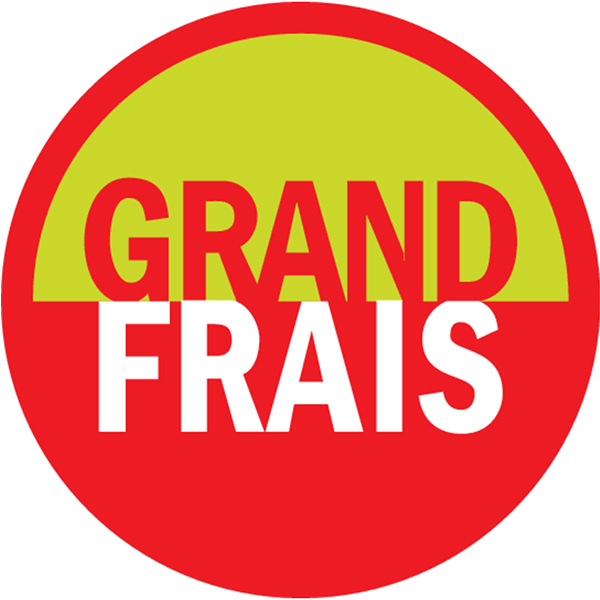 Jean-Paul Mochet prend la présidence de Prosol (Grand Frais) - 30/03/2024
Jean-Paul Mochet prend la présidence de Prosol (Grand Frais) - 30/03/2024
 Chômage partiel à la Compagnie des pêches de Saint-Malo - 28/03/2024
Chômage partiel à la Compagnie des pêches de Saint-Malo - 28/03/2024
 Le propriétaire italien de Saupiquet veut convertir les Français au thon à l'huile - 28/03/2024
Le propriétaire italien de Saupiquet veut convertir les Français au thon à l'huile - 28/03/2024
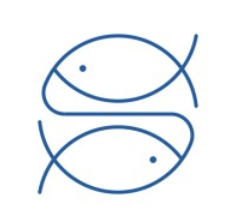 Belle-Iloise, PME maritime et terrestre - 16/03/2024
Belle-Iloise, PME maritime et terrestre - 16/03/2024
 Sapmer reste sous le contrôle de son actionnaire historique à La Réunion - 12/02/2024
Sapmer reste sous le contrôle de son actionnaire historique à La Réunion - 12/02/2024
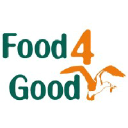 Food4Good mise sur la pêche écoresponsable pour ses surgelés - 13/01/2024
Food4Good mise sur la pêche écoresponsable pour ses surgelés - 13/01/2024

